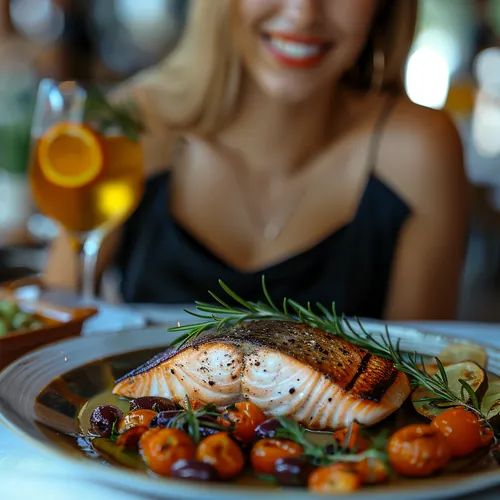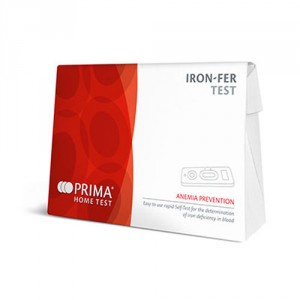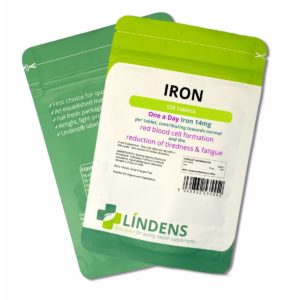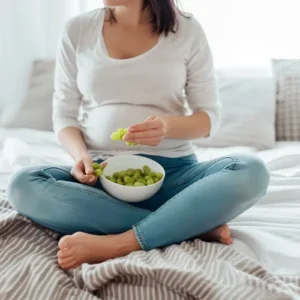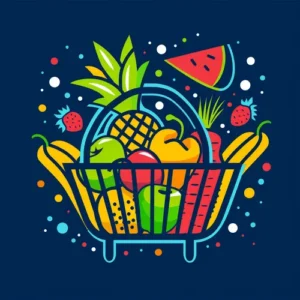Iron is an essential nutrient to sustain a healthy body but you will be amazed at the amount of people who can’t identify food sources of this important mineral. Researchers have indicated that almost 5% of the country might have iron deficiency or anaemia, a disturbing amount since this mineral is needed to carry oxygen via the blood and is important for giving energy for everyday living.
If you are worried that you are deficient in iron, you may be suffering from anaemia. At Zoom Health we offer a test kit for anaemia that allows you to test at home, with easy to read results. You may also want to read our article on how you can tell if your body is iron deficient.
Iron Supplements
You may need to take an iron supplement and start eating more foods that contain iron. Taking one-a-day Iron tablets from Lindens are an easy way to top up your iron levels. Vitabiotics offer a great Iron supplement called Feroglobin. It’s now also available as an effervescent drink, for if you want an alternative format.
10 Amazing Ways To Obtain Iron
To maintain good iron levels, we will now show you 10 amazing ways to obtain iron.
1. Dark Green Vegetables
The majority of dark green vegetables have ample quantities of iron. Curly Kale and Watercress, along with several others are a dependable source of iron. An interesting fact: cooking actually boost the quantity of iron in several dark green vegetables.
2. Steak
Steaks are an excellent way to get absorbable iron. For quite a while, eating beef steaks was a very popular way of obtaining this mineral. Not a lover of steaks? The majority of red meats also have great quantities of iron. Liver is particularly high in Iron.
… Don’t Forget the Fish!
While red meat tends to get all the glory for iron, salmon is actually an outstanding source of heme iron that often gets overlooked. A 100g serving of wild Atlantic salmon contains nearly 1 mg of iron, which is about 6% of the daily requirement. Salmon’s iron content rivals that of lean beef and chicken. Plus, the iron in fish is heme iron, the most absorbable and bioavailable form. Salmon is also an excellent source of protein, vitamin D, selenium and omega-3 fatty acids – making it one of the most nutrient-dense foods you can eat. So whether you grill, bake, smoke or sear it, be sure to work salmon into your weekly meal rotation as a delicious way to boost your iron intake.
3. Oysters
Another, non-red meat option. Oysters are packed with iron and other minerals like zinc and magnesium. Around a dozen oysters should be ok, which is the suggested amount for a good dose of iron.
4. Beans
Vegetarian and vegans can pick up lots of healthy iron from beans. (Meat eaters can too!) Kidney beans and black beans are particularly strong sources of this mineral.
5. Nuts
A terrific option for vegetarians too, since you can get decent quantities of iron in a variety of nuts. For instance, almonds, sunflower seeds and cashews deliver a great serving of this vital mineral.
6. Liquorice
This is an unusual source of iron, but natural licorice has high quantities of the mineral. Produced from molasses, just one licorice stick can supply up to 12mg of iron. If you haven’t tried natural licorice since your were a kid, maybe now is the time to give it a whirl?
7. Herbs
Can you believe it? Herbs include iron and many typical seasonings are a good way to obtain this mineral. Herbs containing the largest quantities of iron are thyme, paprika, cinnamon, parsley, curry, spearmint, and rosemary.
8. Fortified Breakfast Cereals with Iron
Most breakfast cereals ear now fortified with vitamins and minerals. A bowl of Shreddies, for example, contains 5 vitamins and Iron and can offer up to 25% of your daily NRV. (By the way, NRV = nutrient reference values, which is the recommended nutritional intake based on currently available scientific knowledge.)
9. Dried Fruit
Dried apricots are great for snacking on. They also offer an excellent source of Iron. Raisins are also a nutrient-dense treat that offers large amounts of the mineral. It’s simple to add a handful of raisins to your cereal or yoghurt as as sweet treat!
10. Eggs
Eggs are full of various nutrients including iron. Typically eggs have 1.89 mg of iron, which increases energy and gives your immune system a boost. Although not the best source, there is enough iron to supply you with your daily needs. An let’s not forget the other benefits of eating eggs. Egg yolks are a concentrated source of choline, which is an important nutrient that helps with brain development. Eggs contain protein which can help to reduce blood pressure, improve bone health and increase muscle mass.The antioxidants in eggs include Vitamin A, which can help your heart, lungs, kidneys and other organs; and is also vital for good vision. Finally, eggs are high in Vitamin D, which helps to strengthen bones, teeth and regulate your insulin.
11. Molasses
Molasses is a thick, syrupy sweetener that is a byproduct of refining sugar cane into table sugar. Blackstrap molasses, in particular, is very high in iron – just one tablespoon provides 3.2 mg, or 17% of the daily value. The iron in molasses is easily absorbed by the body. Molasses can be used as a sweetener in baking, added to yogurt or oatmeal, or simply stirred into warm water or tea.
12. Tofu
Tofu is made from soybeans and is a versatile source of plant-based protein. Firm or extra firm tofu is also a good source of iron, providing 3 mg per half cup. Tofu can be baked, sautéed, or crumbled up and added to dishes like stir-fries, chili, tacos, and more. Adding tofu to meals helps boost the iron content in a vegan or vegetarian diet. Look for brands of tofu coagulated with calcium or magnesium for maximum iron absorption.
Iron from Plants vs. Animals
When it comes to iron, not all sources are created equal. There are a couple of types of iron found in your diet – heme and non-heme iron. Heme iron is present in animal products like chicken and poultry, red meat such as beef, and seafood. It is more easily absorbed by the body. Non-heme iron comes from plant-based foods like grains, vegetables, beans, nuts and fortified foods.
While plants can certainly provide iron, non-heme iron isn’t absorbed as well as the heme form. In fact, your body only absorbs an estimated 15-35% of non-heme iron compared to 25-35% of heme iron. So if you’re following a vegetarian or vegan diet, you’ll need to consume more iron-rich plant foods to meet your needs.
Enhance Your Iron Absorption
No matter what dietary sources you rely on, there are some easy ways to boost your iron absorption. Vitamin C is a powerful enhancer – so squeeze some lemon or lime juice over your leafy greens, or pair iron-rich meals with foods high in vitamin C like bell peppers, tomatoes or oranges. Cooking in a cast iron skillet can also slightly increase iron content.
On the flip side, there are some iron absorption inhibitors to avoid. Calcium is one, so don’t wash down an iron supplement with a glass of milk. Coffee, tea, red wine and cocoa can also limit absorption due to their polyphenol compounds. If you do drink tea or coffee with meals, limit your portions or enjoy them between meals.
Signs of Iron Deficiency
Not getting enough iron can take a toll over time. Fatigue, weakness, pale skin, shortness of breath, dizziness, headaches and brittle nails are just some of the symptoms of iron deficiency anaemia. Women with heavy periods are especially at risk. Children and teenagers going through growth spurts also have higher iron needs.
While an iron supplement can help correct a deficiency, it’s best to focus on food sources first. Eating a variety of heme and non-heme options gives you the iron you need along with other vital nutrients found in iron-rich whole foods.
Photo “Salmon” by Anthony Cunningham for Zoom Health
Zoom Health is a leading UK supplier of Home Health Tests and Earplugs

